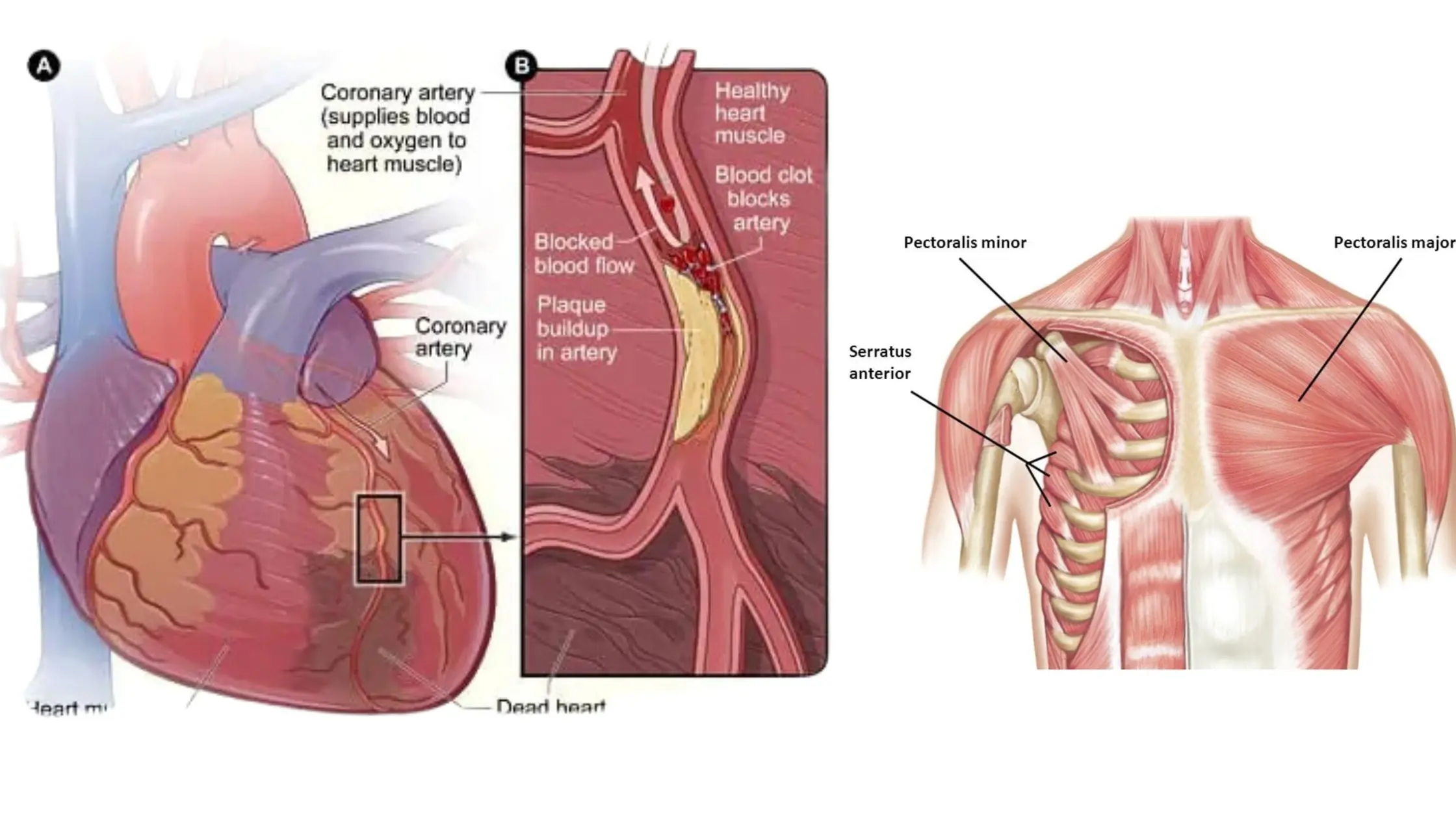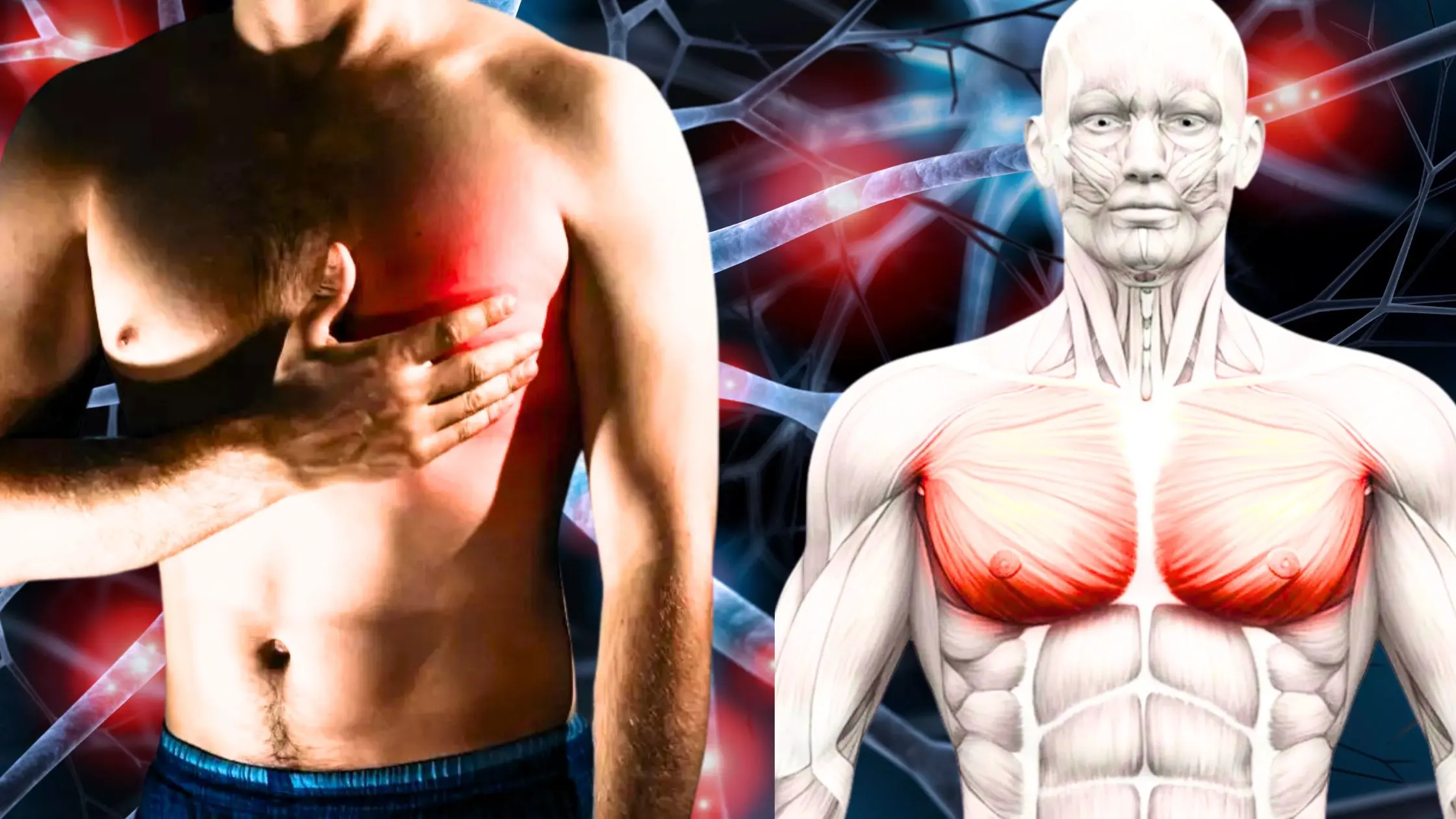Experiencing a muscle spasm in your chest can be an alarming and uncomfortable sensation. While often harmless, these spasms can cause concern due to their proximity to the heart. This article aims to provide a thorough understanding of chest muscle spasms, their causes, and effective management strategies.
Whether you’re dealing with occasional twitches or more persistent discomfort, understanding the nature of these spasms can help alleviate anxiety and guide you toward appropriate care. We’ll explore various aspects of chest muscle spasms, from their common triggers to practical steps for relief, ensuring you’re well-equipped to handle this often misunderstood condition.
What Are Muscle Spasms in Chest?
Chest muscle spasms are involuntary contractions of the muscles in the chest area. These spasms can range from mild twitches to intense, painful cramps. They typically affect the intercostal muscles (between the ribs) or the pectoralis major (the large chest muscle).

Unlike cardiac issues, muscle spasms are musculoskeletal in nature, meaning they involve the muscles and connective tissues rather than the heart itself. These spasms can be triggered by various factors, including physical exertion, dehydration, or even stress.
Understanding the difference between muscle-related chest discomfort and cardiac symptoms is crucial for proper self-assessment and knowing when to seek medical attention.
Common Symptoms
- Sudden, sharp pain in the chest
- Tightness or pressure in the chest area
- Visible muscle twitching
- Discomfort that may increase with movement or breathing
Causes of Muscle Spasms in Chest
Understanding the potential causes can help in both prevention and treatment:
- Overexertion: Intense physical activity or sudden, strenuous movements can lead to muscle fatigue and spasms.
- Dehydration: Lack of proper hydration can affect muscle function and lead to cramping.
- Electrolyte imbalances: Deficiencies in minerals like potassium, calcium, or magnesium can trigger muscle spasms.
- Poor posture: Prolonged poor posture can strain chest muscles, leading to spasms.
- Stress and anxiety: Emotional stress can cause muscle tension and spasms.
- Certain medical conditions: Conditions like fibromyalgia or costochondritis can increase the likelihood of chest muscle spasms.
How to Stop Muscle Spasms in Chest
If you’re experiencing chest muscle spasms, try these techniques for relief:
- Gentle stretching: Carefully stretch the affected area to help relax the muscle.
- Apply heat: Use a heating pad or warm compress to improve blood flow and relax tense muscles.
- Stay hydrated: Drink plenty of water to maintain proper muscle function.
- Practice deep breathing: Slow, deep breaths can help relax chest muscles and reduce spasms.
- Massage: Gently massage the affected area to promote relaxation and blood flow.
- Over-the-counter pain relievers: NSAIDs can help reduce pain and inflammation associated with muscle spasms.
Muscle Spasms in Chest Left Side
Spasms on the left side of the chest can be particularly concerning due to their proximity to the heart. While often muscular in nature, it’s important to rule out cardiac issues, especially if you have risk factors for heart disease.
Distinguishing Features of Left-Side Chest Spasms
- Pain that’s localized and may increase with movement or touch
- Absence of other cardiac symptoms like shortness of breath or radiating pain
- Relief with muscle relaxation techniques
If you’re unsure about the cause of left-side chest pain or spasms, it’s always best to seek medical attention to rule out serious conditions.
When to Seek Medical Attention?
While most chest muscle spasms are benign, certain symptoms warrant immediate medical evaluation:
- Severe, persistent chest pain
- Shortness of breath
- Pain radiating to the arm, jaw, or back
- Dizziness or fainting
- Rapid or irregular heartbeat
These symptoms could indicate a more serious condition, such as a heart attack, and require prompt medical attention.
Chest Muscle Spasms: Prevention Strategies
Preventing chest muscle spasms involves maintaining overall health and addressing potential triggers:
- Stay hydrated: Drink adequate water throughout the day.
- Maintain electrolyte balance: Consume a balanced diet rich in potassium, calcium, and magnesium.
- Warm up before exercise: Properly prepare your muscles before engaging in physical activity.
- Practice good posture: Be mindful of your posture, especially if you spend long hours sitting.
- Manage stress: Incorporate stress-reduction techniques like meditation or yoga into your routine.
- Regular stretching: Include chest and upper body stretches in your daily routine.
Long-Term Management
For those experiencing recurrent chest muscle spasms, consider these long-term strategies:
- Physical therapy: A therapist can teach specific exercises to strengthen and stretch chest muscles.
- Lifestyle modifications: Identify and address factors that may contribute to muscle tension, such as poor ergonomics or sleep habits.
- Regular exercise: Engage in regular, moderate exercise to improve overall muscle health and flexibility.
- Stress management: Develop effective stress-coping mechanisms to reduce muscle tension.
- Nutritional assessment: Consult with a healthcare provider or nutritionist to ensure you’re meeting your body’s nutritional needs.
Muscle Spasms in Chest: Conclusion
Muscle spasms in the chest can be uncomfortable and concerning, but with proper understanding and management, they can often be effectively addressed. By implementing preventive strategies and knowing when to seek medical attention, you can minimize the impact on your daily life.
Remember, while most chest spasms are benign, it’s always better to err on the side of caution and consult a healthcare professional if you have any doubts or concerns about your symptoms.
